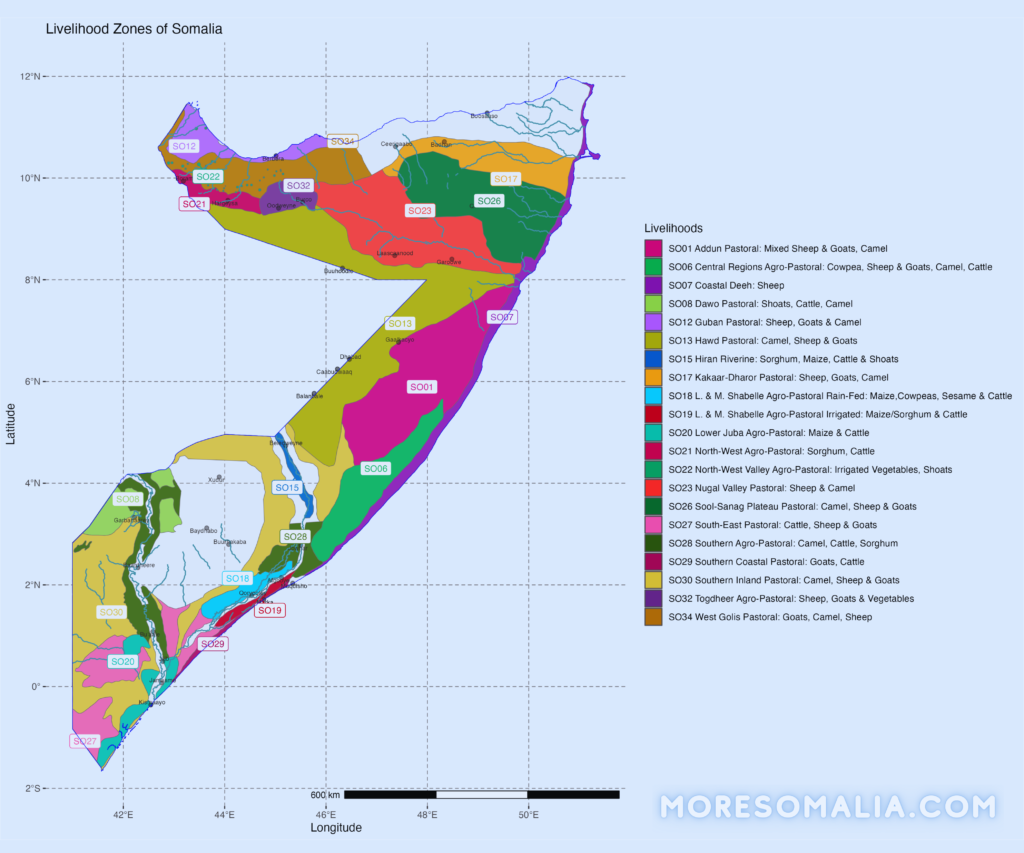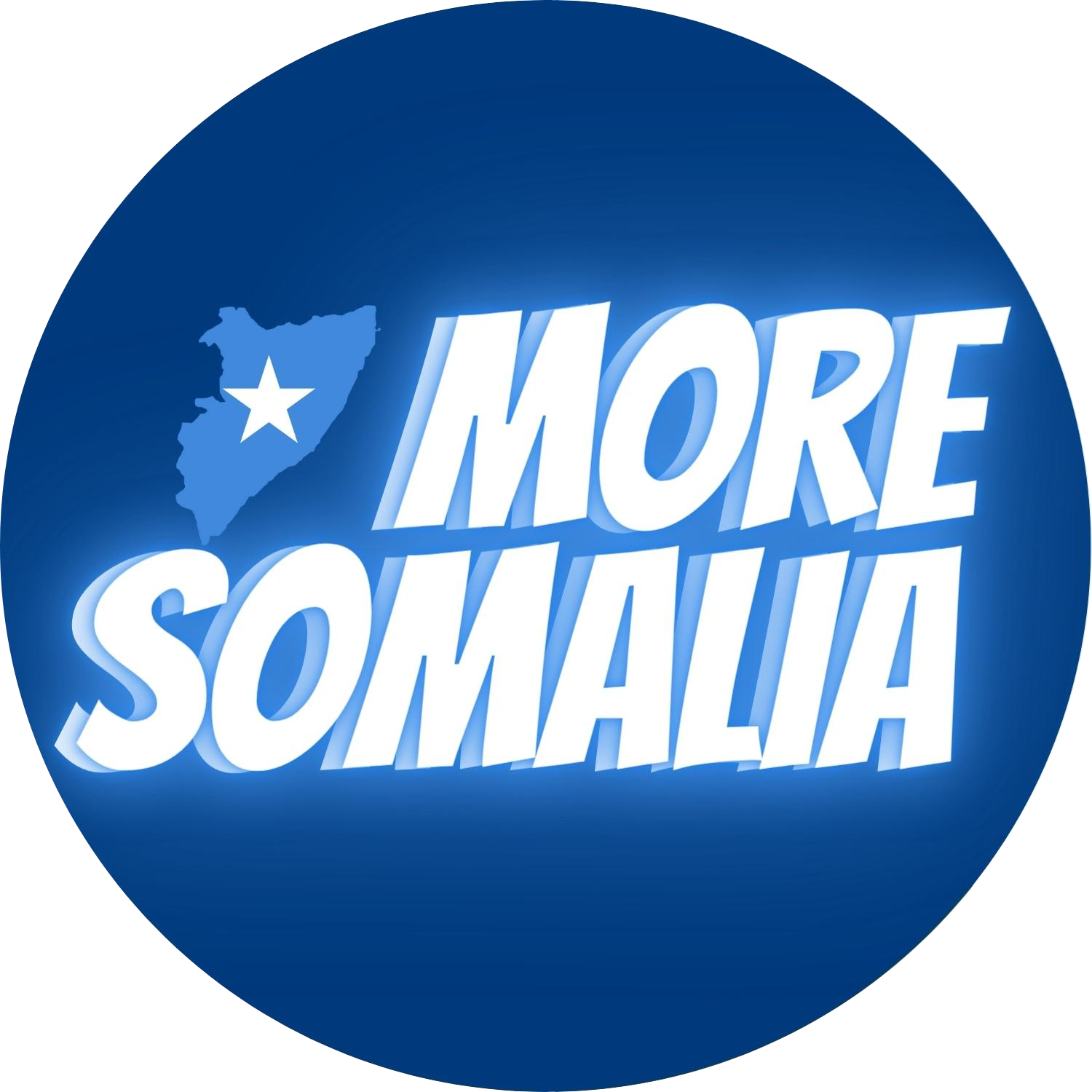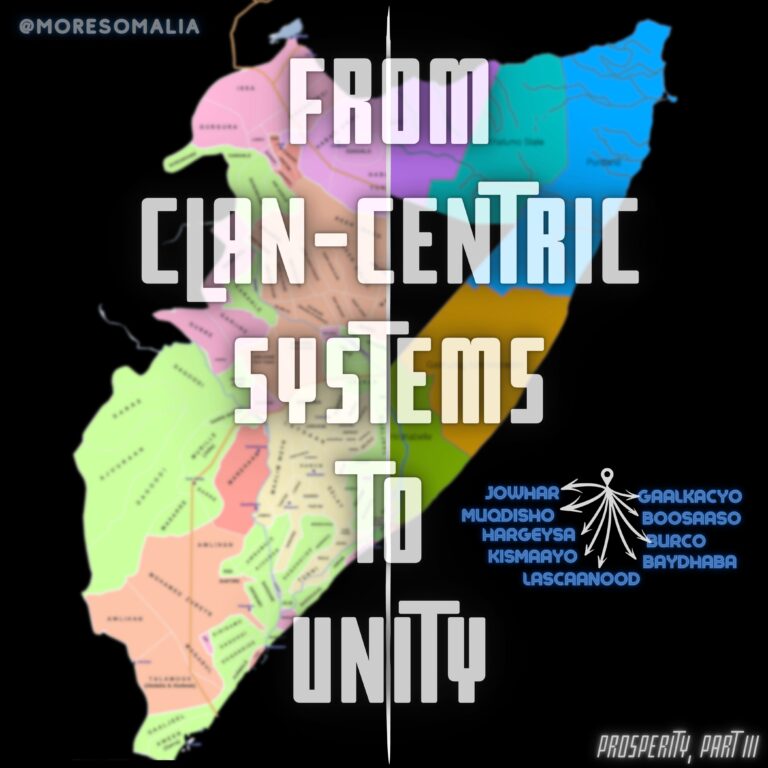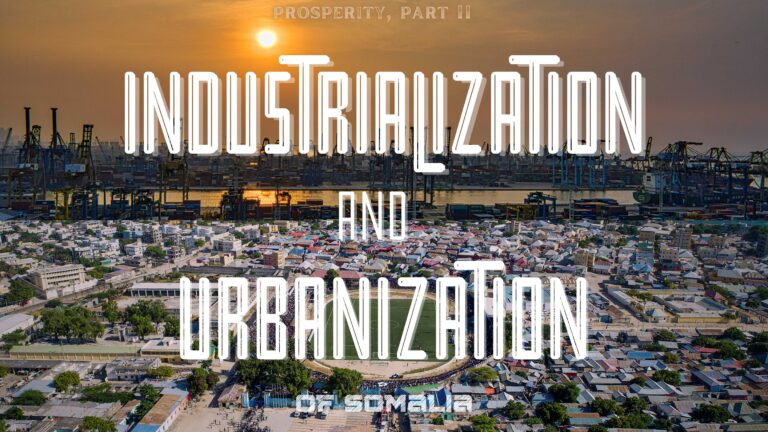This is the first of 3 articles about how to mix the Somali people in order to achieve prosperity. To get an overview of this series, see the overview article here.
This article aims to provide an insight on why it is important for the nomads in Somalia to be settled in order to achieve economic prosperity and environmental conservation. This article will be written in three parts; first part will provide a overview of the history of nomadic lifestyle, economics and problems, the second part will explain why it is necessary for the nomads to be settled, and finally the third part will support the second part in order to make the reader understand the importance of nomadic settlements.
Part 1: Nomadic history, economy and challenges
History of nomadic lifestyle
The nomadic lifestyle in Somalia has deep historical roots and has been a significant aspect of the country’s culture and society for centuries. Somali nomads are traditionally pastoralists, relying on livestock herding as their primary means of sustenance and trade. Historically, they traversed vast territories in search of water and pasture for their animals, which led to their early expansions across the Horn of Africa region. Early Somali expansions were characterized by migrations and the establishment of grazing lands and settlements in different regions, including parts of present-day Somalia, Djibouti, Ethiopia, and Kenya, Some are even believed to have reached as far as present-day Rwanda. These migrations sometimes led to clashes with neighboring communities and other clans, particularly over access to resources and grazing lands.
This short period of nomadic expansion was quickly ended by the scramble of Africa and the arrival of Europeans colonists in the Horn of Africa. The division of Somali territories between different countries disrupted traditional nomadic patterns and grazing routes. It led to challenges in accessing traditional grazing lands and water sources, causing conflicts and tensions between different nomadic groups and settled communities. The new borders also restricted the movement of nomads, hindering their ability to follow seasonal resources and adapt to changing environmental conditions.
After independence, while many prominent African leaders aimed to keep the colonial borders, Adan Adde, the first president of Somalia sought to reunite traditional Somali inhabited territories as was evident in his 1963 ORGANIZATION OF AFRICAN UNITY speech (view or download it here). A divided Somali society and territories didn’t seem like a problem at the time but in the years to come, this has had long-term implications for the social, economic, and cultural aspects of Somali nomadic life.
History of nomadic economy.
The camel has always had more value in the eyes of the Somali people than any other worldly material. The number of camels a person possessed indicated their level of wealth and success. Unlike other animals, which the Somalis raised, the camel can survive in environments where water and pastureland are scarce and widely scattered. For centuries, nomads have sustained their way of life by relying on their livestock to provide for their needs and desires. Through trade with international merchants and urban markets, they have exchanged cows, goats, and camels for essential goods like tea, coffee, and salt. In the nineteenth century, northern Somalis capitalized on the goat market, serving as intermediaries for the British, who sought meat for their Aden colony. This thriving trade saw Berbera exporting around 1,000 cattle and 80,000 sheep and goats annually to Aden by the turn of the century. (Reusse, E. 1982.)
In the 1960s and 1970s the Somali economy was heavily dependent on the nomads and their livestock exports.
According to a report by the World animal review of 1982 titled, “Somalia’s Nomadic livestock economy,” 70 percent of Somali people were devoted to the nomadic lifestyle, they contributed to 60 percent of the country’s GNP and 80 percent of value to the national export. For some time the Somali port of Berbera on the gulf of Aden was the world’s number one livestock shipping point, handling over two million livestock annually. Unlike other land resources that require exploitation, production and transportation, the nomadic economy was and still is remarkably independent of Modern commercial input requirements. The livestock journey to consumer markets whether domestic or abroad doesn’t require transportation. Thousands of livestock walk for hundreds of kilometres to reach the shipping port or domestic markets without appreciable loss of condition.
The nomadic economy also played a critical role in ensuring food security for both the nomads and settled communities. Livestock provided meat and dairy products, while the trade surplus from livestock exports allowed for the import of essential goods and food items that were not locally available, this included food products such as rice, wheat, flour, sugar, cooking oil, and canned goods.
Drought and early resettlement.
Nomadic communities throughout history have confronted severe environmental challenges, particularly during the 20th century, marked by recurring droughts. These droughts had devastating impacts on nomadic livelihoods, leading to dried-up grazing lands, dwindling water sources, and food scarcity, posing threats to their livestock and communities.
The drought of 1974/75 dealt a significant blow to Somali nomads, due to colonial borders limiting nomadic movement, coupled with overgrazing and overstocking through the years, the pastureland of the young country suffered degradation. Unfortunately, both the government and nomadic communities were ill-prepared for recurring droughts resulting in significant economic setback. Until the drought, Somalia was a huge contributor to Arab consumer markets with its sheep/goat and camel production making up 75% and 90% of Saudi imports, respectively. However, over the subsequent three years, new suppliers, especially Australia, seized the opportunity to fill the gap in Arab livestock import left by the drought. Besides economic decline, the drought also caused the tragic loss of nomads and their livestock. (Reusse, E. 1982.)
In response, the Siad Barre government took swift action, and Col. Mohammed Omar Jez stated that they could resettle nearly a quarter million people in a few months, which would have otherwise taken 15 years without the drought, as reported by the New York Times.
Approximately 200,000 people, mainly nomads, were resettled during this period, though nearly 80% of them lost their livestock in the process. To foster a new way of life, the government established three agricultural settlements (Dujuma, Sablaale, and Kurtunwary) and three fishing settlements (Brava, Adale, and Eil). These settlements aimed to educate and encourage nomads to explore alternative economic activities such as farming and fishing. However, the transition to settled life proved to be challenging. Agriculture and fishing provided limited wealth compared to the income derived from livestock, and many nomads lacked experience in these new fields, making the adjustment to their new lifestyle exceedingly difficult. (Tsui AO, Ragsdale TA, Shirwa AI., 1991)
What happened to the nomads after the civil war
In 1991, the nomads who were recovering from the 1970s and 80s drought were yet again hit by a devastating tragedy, which turned the country upside down. The civil war which saw the ousting of then president Siad Barre, majorly affecting the nomads. Many nomadic families were forced to flee their traditional grazing areas due to violence and insecurity, leading to internal displacement within Somalia or migration to neighboring countries. The conflict also disrupted traditional herding practices, resulting in the loss of valuable livestock and a decline in their economic well-being.
Essential resources like water, food, and healthcare were scarce and hard to access due to infrastructure destruction.
Throughout the 2000s, nomads continued to suffer under the unstable political conditions and the harsh droughts that followed.
Part 2: Settling the nomads
Why the nomads need to be settled
In the present day, the nomadic lifestyle is no longer sustainable or economically beneficial for Somalia, as the nation is facing challenges like droughts, famine, civil war, and lack of government investment. Due to the increasing aridity caused by climate change, Somali nomads have become the most vulnerable population, and many are compelled to abandon their traditional way of life as expected rains fail to arrive.
Over time, the nomadic population has significantly declined. In 2018, the IGAD land governance portal estimated that the nomadic population had reduced to about 55%, compared to the 1970s when it was around 70%, and the economy was thriving.
To prevent the slow extinction of the nomadic way of life, we propose a second resettlement of the nomads. Unlike in the 1970s, when nomads were forced to adopt farming or fishing, this resettlement program aims to settle the nomads while preserving their culture and lifestyle alongside their animals.
Settling the nomads will have several advantages. It will help preserve their unique culture, promote economic prosperity, and foster social development. Additionally, the government will be better able to track the population and provide essential resources, education, and healthcare. Moreover, the environment will be better preserved and improved.
By undertaking this resettlement approach, we can address the challenges faced by the nomadic community, create opportunities for sustainable growth, and foster a harmonious coexistence between traditional values and modern necessities.
Settlement style (ranching)
Ranching is a method of livestock farming that involves raising animals, primarily cattle, on large pieces of land known as ranches or grazing lands. Ranching is commonly associated with extensive grazing systems, where animals have access to ample open space to roam and graze on natural vegetation.
In a ranching operation, the primary focus is on raising livestock, such as cattle, camel, sheep, or goats for various purposes, including meat production (beef or lamb), milk production, and wool or fiber production. Ranchers manage and care for the animals, ensuring they have access to water, appropriate nutrition, and protection from predators and harsh weather conditions.
Ranches can vary in size, ranging from a few hundred to thousands of acres, depending on the region and available resources. Over time, ranching practices have evolved, incorporating modern technologies and management techniques to improve efficiency and sustainability. Sustainable ranching practices often emphasize responsible land and resource management to ensure the long-term health of both the animals and the ecosystem in which they are raised.
Technological advancements that will help the nomads in their new lifestyle
In the twenty first century, the human race has become more sophisticated and technologically advanced. On ranches the nomads will become familiar with different types of devices and machines to help them in their new lifestyle. Some of these technologies include:
- Livestock Monitoring Systems: Internet of Things (IoT) devices and GPS technology allow ranchers to track and monitor the location and health of their livestock remotely. These systems can help detect early signs of illness or distress, enabling timely intervention and reducing losses.
- Drones: Drones equipped with cameras and sensors can provide aerial views of the ranch, helping ranchers monitor grazing patterns, locate missing animals, assess vegetation health, and identify potential issues with fences or infrastructure.
- Precision Agriculture: Precision agriculture technologies, such as GPS-guided tractors and automated irrigation systems, can optimize resource use on ranches, leading to better pasture management, reduced costs, and increased productivity.
- Data Analytics: Ranchers can use data analytics tools to analyze historical and real-time data, enabling better decision-making about livestock management, breeding programs, and feed formulations.
- Remote Sensing: Remote sensing technologies, like satellite imagery and ground-based sensors, can offer valuable information about soil health, vegetation growth, and weather patterns, aiding in making informed ranch management decisions.
- Genetic Selection and Breeding: Advances in genetic research allow ranchers to identify desirable traits in livestock and make informed breeding decisions, leading to improved herd genetics and higher-quality offspring.
- Automated Feeding Systems: Automated feeding systems can dispense feed to livestock at pre-programmed intervals, reducing labor requirements and ensuring consistent and controlled nutrition for the animals.
- Water Management Systems: Smart water management systems can help monitor water levels and automate water distribution, ensuring sufficient hydration for livestock while optimizing water usage.
- Wearable Technology for Livestock: Devices like smart collars and ear tags can provide real-time data on the health and behavior of individual animals, aiding in early disease detection and improving overall herd management.
Ranches
To ensure a successful resettlement plan, the government should distribute land to nomads based on the type and number of animals they possess. Implementing a test program with a smaller group on a ranch is recommended to assess effectiveness, identify challenges, and make necessary adjustments before proceeding with mass resettlement. This approach will minimize risks and lead to a more successful long-term outcome. Below is a map displaying the proposed resettlement areas in which camel, sheep, goat, and cattle-based pastoralism is already being practiced:

The government should ensure that the nomads receive proper training and education on ranching practices, technology use, animal husbandry, and sustainable land management. This will help them adapt to their new way of life and make the transition smoother. Providing support and resources, such as veterinary services, infrastructure, and access to markets, will be crucial in helping the nomads develop sustainable livelihoods and thrive in their new environment.
Part 3: Ensuring livestock export
In recent times, Somalia’s livestock exports have been hitting new lows. Due to the unregulated livestock production, nomads often ignore the possibilities of contamination and disease, making international trade partners fearful of importing Somalia’s livestock. In 2016, Saudi Arabia banned the import of Somali livestock following reports of Rift Valley Fever in the region.
World Organization For Animal Health
In contemporary times, ensuring the health and welfare of animals has become paramount, especially for nations aiming to export animals. Adhering to the standards set by the World Organization for Animal Health (WOAH) can foster trade partnerships between Somalia and other countries, creating more export opportunities for Somali livestock products. As a result, this can significantly boost income and stimulate economic growth for the newly established ranches. Furthermore, being a part of the (WOAH) network enables Somali ranchers to engage in collaborative efforts with other countries and organizations, facilitating the exchange of knowledge, technology, and best practices in livestock management.
Conclusion
In conclusion, it is essential to settle the nomads in Somalia if the country is to thrive economically and preserve the environment. Due to droughts, civil strife, and a lack of government investment, the nomadic way of life that formerly flourished in the nation has experienced difficulties. We suggest a resettlement program which is centered around ranching, in order to retain the nomadic culture and way of life together with their animals. The nomads’ new way of life will be made easier by technological developments including livestock monitoring systems, drones, precision agriculture, and genetic selection. The program will promote economic development and trading prospects for Somalia while ensuring the health and welfare of animals. It must be implemented with appropriate training, support, and adherence to international standards, such as those established by the World Organization for Animal Health.
References
- Somalia’s nomadic livestock economy article: https://pdf.usaid.gov/pdf_docs/PNAAP854.pdf
- https://www.nytimes.com/1975/07/12/archives/somali-nomads-being-shifted-to-new-lives.html
- Tsui AO, Ragsdale TA, Shirwa AI. The settlement of Somali nomads. Genus. 1991 Jan-Jun;47(1-2):131-50. PMID: 12284818.
- https://land.igad.int/index.php/countries/somalia
- Aden Adde’s speech in 1963 at the ORGANIZATION OF AFRICAN UNITY (O.A.U) SUMMIT (page 105) https://au.int/sites/default/files/speeches/38523-sp-oau_summit_may_1963_speeches.pdf




[…] The settling of the nomads: Click here to read the article […]
[…] studies (Ogallo et al., 2018; Ramadane, 2014; Thalheimer & Oh, 2023) identifying recurring droughts in the country in 1999, 2008-09, 2011, and […]